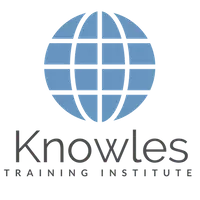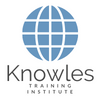Resume Writing Strategies Training Course In Singapore

About This Resume Writing Strategies Training Course
Resume Writing Strategies Course in Singapore
A resume is an applicant’s gateway to a new job. It displays significant achievements, experiences, and skills. A competent-looking and organized resume is an employer’s version of attention-grabbing. Writing an excellent resume cannot be accomplished overnight. It should be written thoughtfully and updated with every new experience or achievements gained.
Who Should Attend This Resume Writing Strategies Workshop
This Resume Writing Strategies workshop is ideal for anyone who would like to gain a strong grasp and improve their Resume Writing Strategies.
All Staff Within An Organisation
Managers
Team Leaders
Executives
Assistants
Officers
Secretaries
Group Size For This Resume Writing Strategies Training Program
The ideal group size for this Resume Writing Strategies course is:
Minimum: 5 Participants
Maximum: 15 Participants
Course Duration For This Resume Writing Strategies Skills Course
The duration of this Resume Writing Strategies workshop is 1 full day. Knowles Training Institute will also be able to contextualised this workshop according to different durations; 2 full days, half day, 90 minutes and 60 minutes.
1 Full Day
9 a.m to 5 p.m
Resume Writing Strategies Course Benefits
Below is the list of course benefits of our Resume Writing Strategies course
- Understand the concept of a resume writing strategy to get hired
- Have detailed plans when writing a resume and what to consider before writing
- Be equipped with knowing the purpose of the resume in applying for a job or promotion
- Know the different resume formats that may be used for specific occupations
- Display the main objectives and desires in a resume
- Attain a readable and easily understood resume by applying the right formats
- Grasp the ways highlight your best accomplishments to garner attention
- Know about resume formats that have an easy flow of thought
- Learn to avoid putting in unnecessary information in your resume
- Develop an effective design that may be used in a resume
- Comprehend the reasons why hiring managers disregard a resume
- Master the ways to use your online profiles to help you get hired
Course Content For This Resume Writing Strategies Training Course
Below is the list of course content of our Resume Writing Strategies training course
Resume Writing Course: Module 1: Ready, Set, Go!
- Identifying Your Values and Purpose
- Assessing Your Skills
- Setting SMART Goals
- Building a Resource System
- A 30-Day Plan
Resume Writing Course: Module 2: Building Your Resume
- Basic Resume Formats
- Chronological Style Resume
- Combination Style Resume
- Essential Information to Include
- Dealing with Awkward Points
- Checklist for Success
Resume Writing Course: Module 3: Polishing Your Resume
- Creating an Attractive Package
- About Branding
- Some Extra Touches
- Checklist for Success
Resume Writing Course: Module 4: Writing a Cover Letter
- Types of Cover Letters
- First contact cover letter
- Targeted cover letter
- Recommendation Cover Letter
- Creating a Template
- Customizing the Template
- Checklist for Success
Resume Writing Course: Module 5: Creating a Portfolio
- When Do I Need a Portfolio?
- Types of Portfolios
- Working Portfolio
- Display Portfolio
- Assessment Portfolio
- Essential Elements
- Checklist for Success
Resume Writing Strategies Value Added Materials
Each participant will receive the following materials for the Resume Writing Strategies course
Resume Writing Learner’s Guide

Resume Writing Key Takeaways Notes

Resume Writing Essentials Ebook

Resume Writing Course Handouts
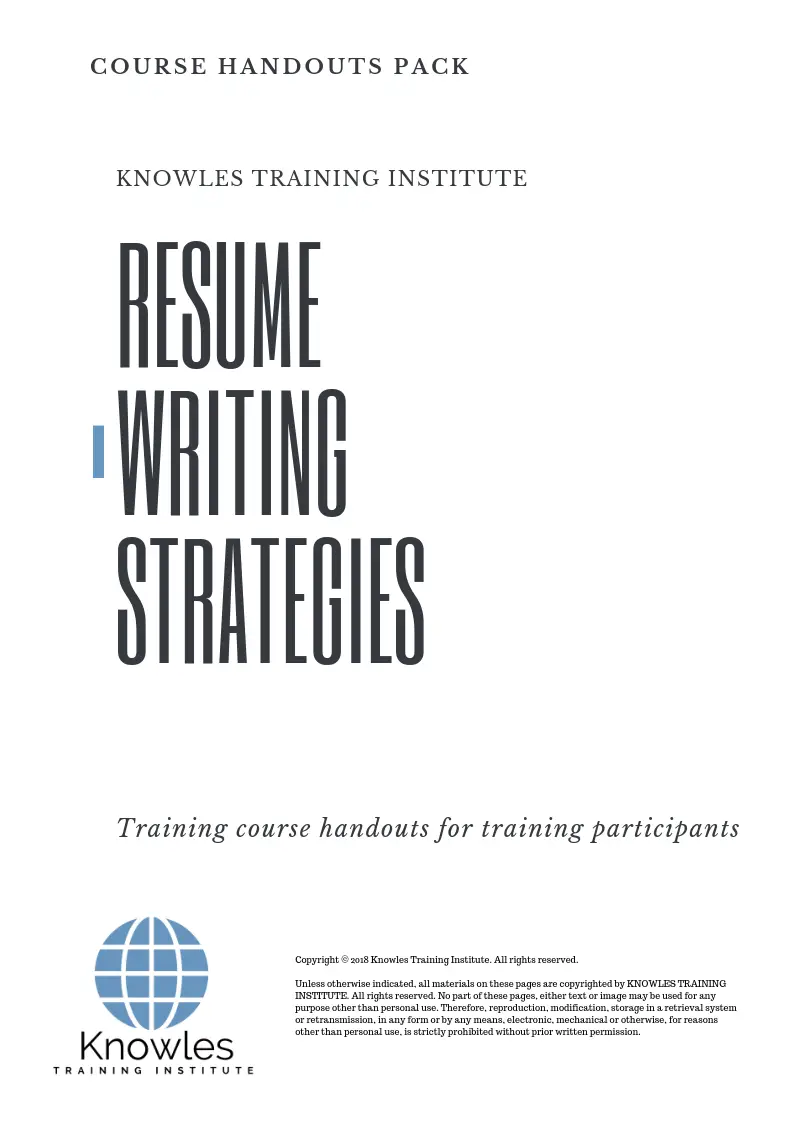
Resume Writing 30-Day Action Plan
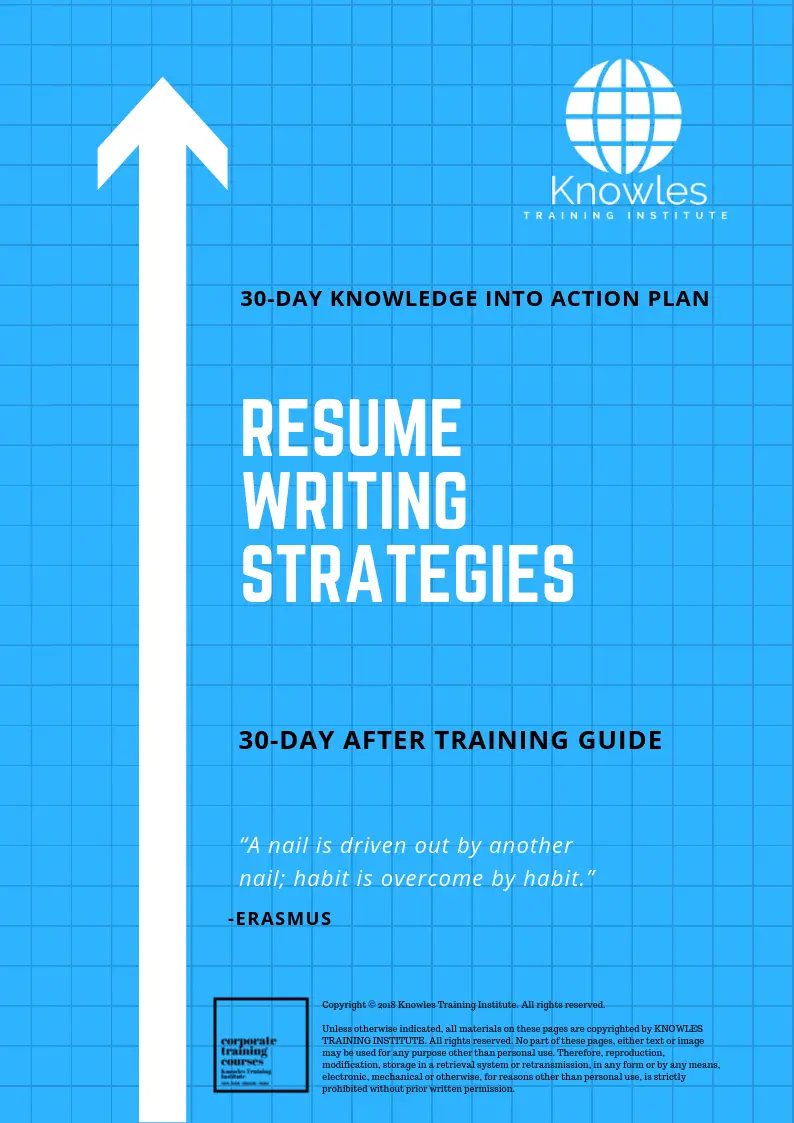
Resume Writing MindMaps Pack

Resume Writing PPT Slides Used During Course

Resume Writing Long-Term Memory Flashcards Pack
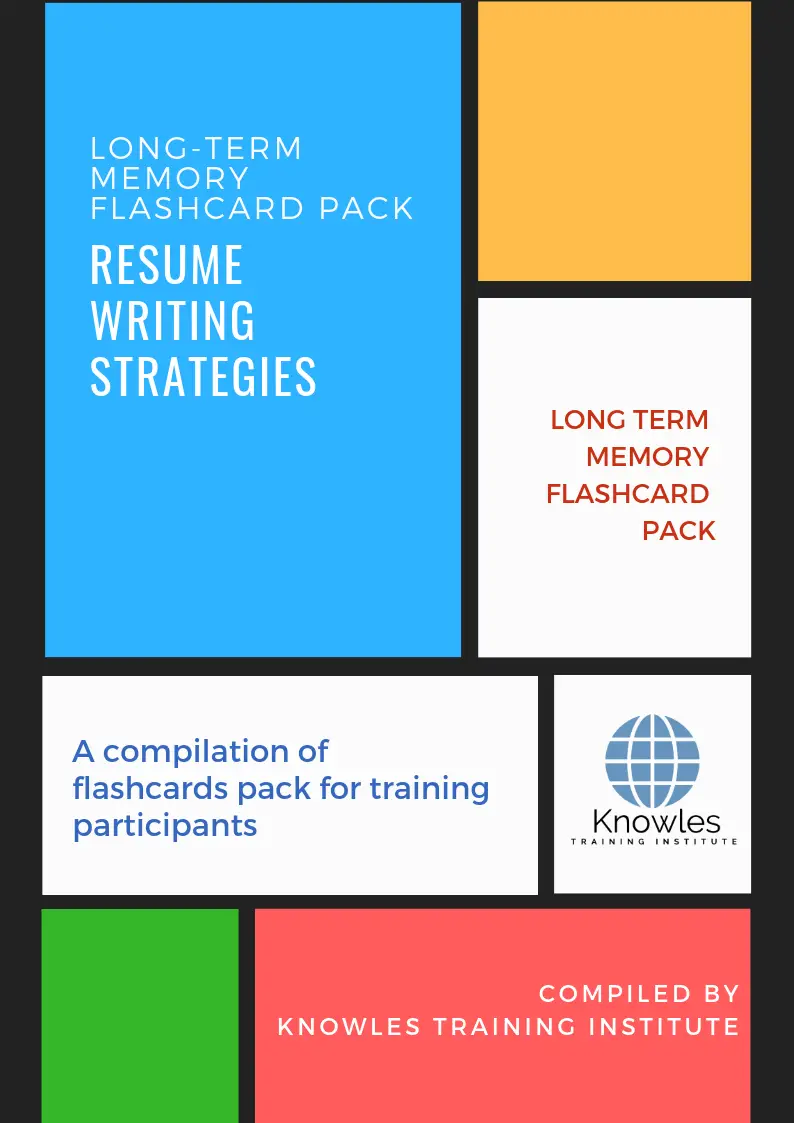
Resume Writing E-Learning Course

Resume Writing Online Video Course

Resume Writing Essential Audiobook
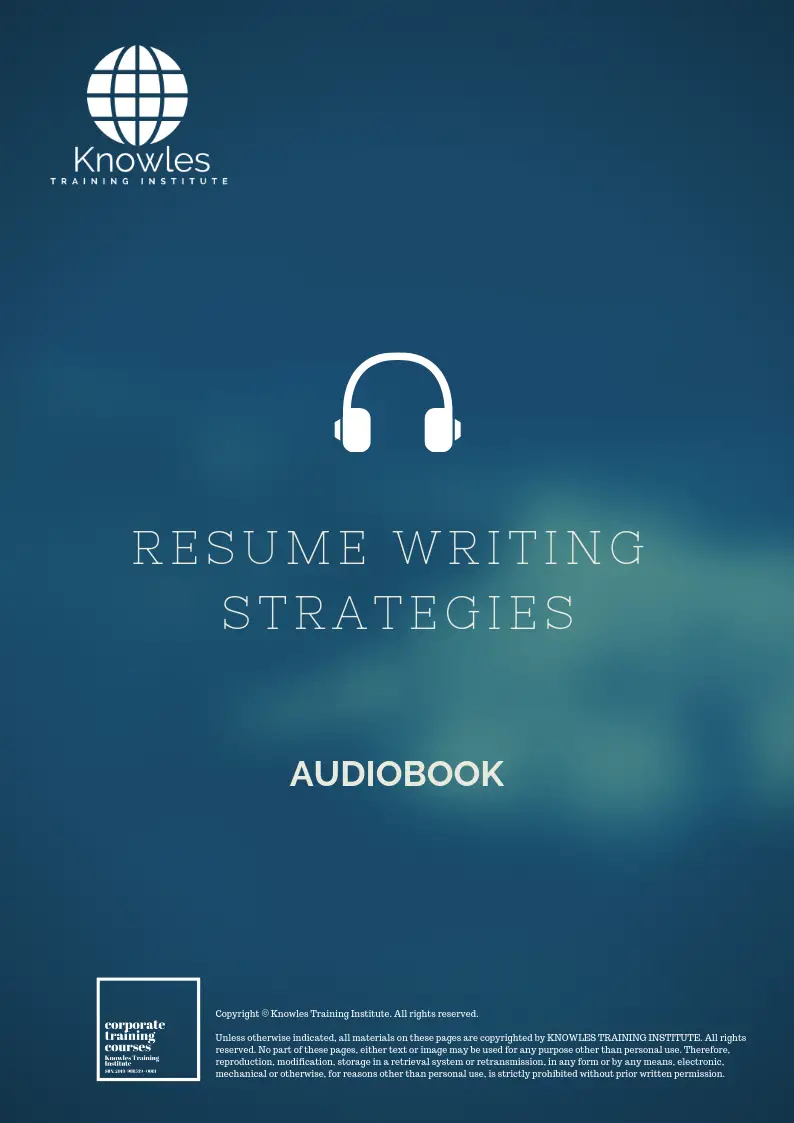
Resume Writing Infographics Pack
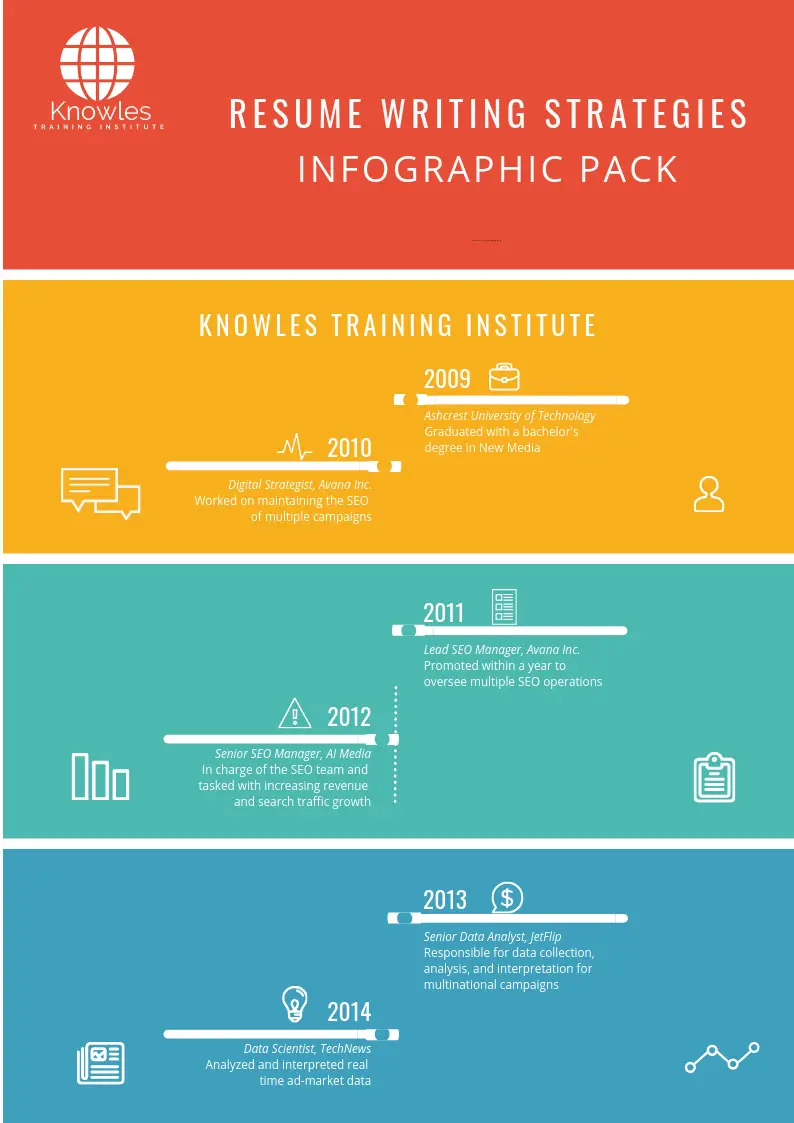
Resume Writing Strategies Certification
Each course participant will receive a certification of training completion

Course Fees
There are 4 pricing options available for this Resume Writing Strategies training course. Course participants not in Singapore may choose to sign up for our online Resume Writing Strategies training course.
SGD $889.97 For a 60-minute Lunch Talk Session.
SGD $389.97 For a Half Day Course Per Participant.
SGD $589.97 For a 1 Day Course Per Participant.
SGD $789.97 For a 2 Day Course Per Participant.
Discounts available for more than 2 participants.
Upcoming Resume Writing Strategies Training Course Schedule
Contact us for the latest Resume Writing Strategies course schedules:
Phone: +65 6714 6663
Email: contact@knowlesti.com
Message:
Download Resume Writing Strategies Course Brochure

Request for this Resume Writing Strategies course brochure. Fill up the short information below and we will send it to you right away!
Post-Training Support: A vast majority of training does not have any effect beyond 120 days. But to work, training has to have a strong pre- and post-training component. Post-training reinforcement consequently helps individuals to recall the understanding and ask questions.
Blended Learning: Learning does not occur in the classroom. Virtually everybody prefers distinct ways of learning. Successful learning should have a multi-channel, multi-modal strategy.
We Understand The Industry: Similarly, we’ve got a profound comprehension of the business, business design, challenges, strategy and the that our participants are in and have designed the courseware to cater to their professional needs.
Course Content: Knowles Training Institute’s material is relevant, of high quality and provide specific learning outputs. As a result, Participants will leave the training course feeling as they have gained a strong understanding and will also be in a position to execute what they have learned sensibly.
Course Development — The workshop modules follow a systematic and logical arrangement. Therefore, this structure helps to ensure that the course material allows the facilitators to deliver the course in a logical arrangement. Consider the subjects as building bricks into learning, our facilitators slowly build towards a comprehensive picture of this entire topic.
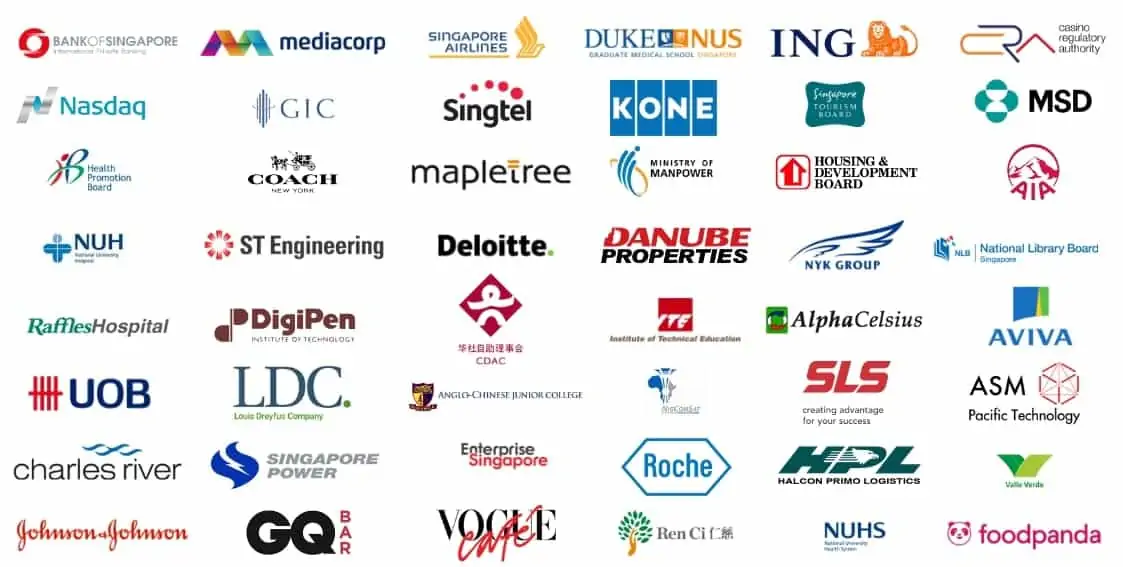

Course Enquiries

Fill up the form and we will get back to you in less than 1 working day.
Alternatively, give us a call to have one of our training consultants contact you. Our corporate training courses can be contextualized to meet your organization’s training needs. Leverage on our large pool of professional trainers and consultants for your organization’s training needs.
Office Address: 60 Paya Lebar Rd, #07-54 Paya Lebar Square, Singapore 409051
Office Phone: +65 6714 6663
Email: contact@knowlesti.sg
We Guarantee 100% Privacy. We Respect Your Privacy. Your Information Will Never Be Shared.
